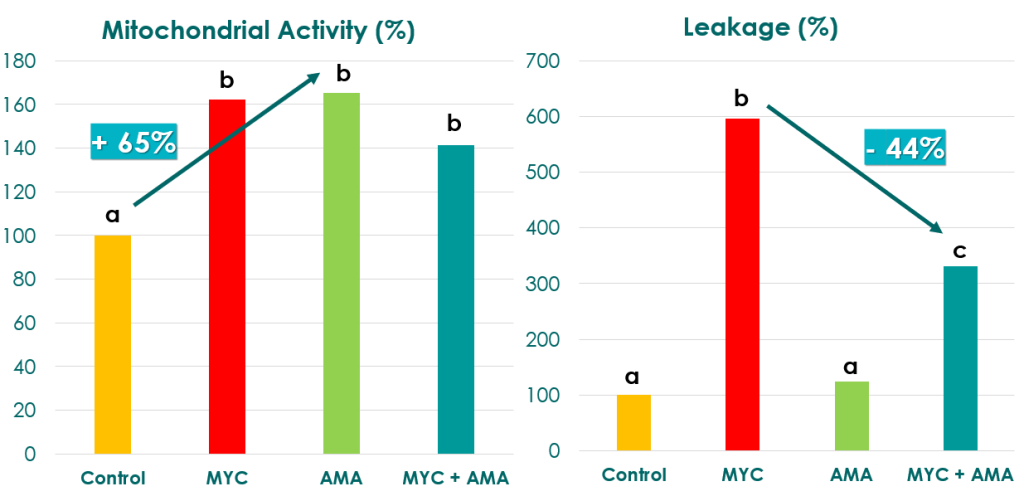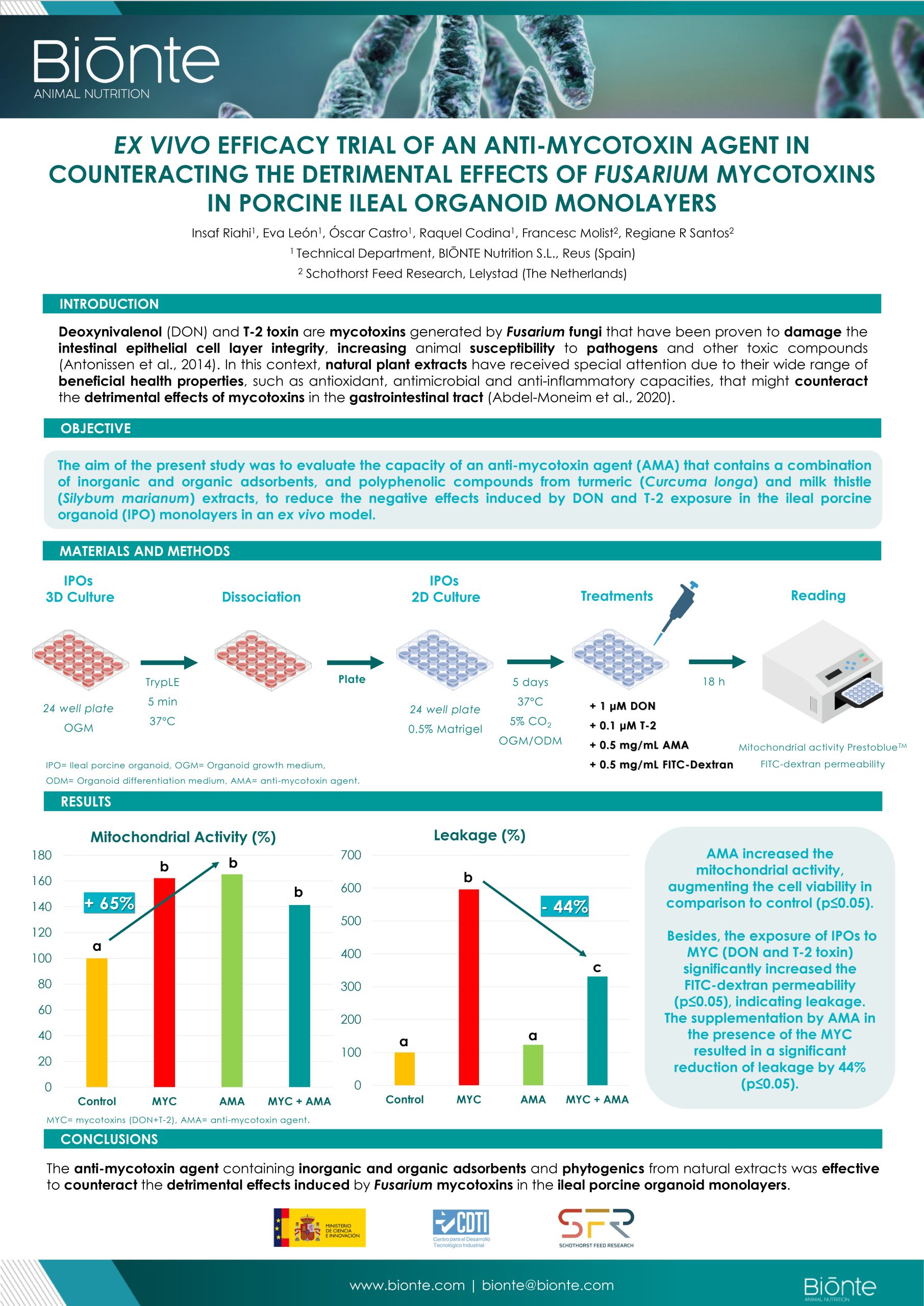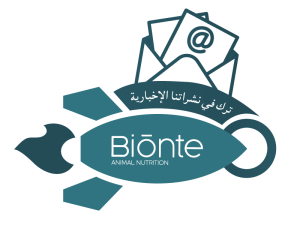INTRODUCTION
Deoxynivalenol (DON) and T-2 toxin are mycotoxins generated by Fusarium fungi that have been proven to damage the intestinal epithelial cell layer integrity, increasing animal susceptibility to pathogens and other toxic compounds (Antonissen et al., 2014). In this context, natural plant extracts have received special attention due to their wide range of beneficial health properties, such as antioxidant, antimicrobial and anti-inflammatory capacities, that might counteract the detrimental effects of mycotoxins in the gastrointestinal tract (Abdel-Moneim et al., 2020).
OBJECTIVE
The aim of the present study was to evaluate the capacity of an anti-mycotoxin agent (AMA) that contains a combination of inorganic and organic adsorbents, and polyphenolic compounds from turmeric (Curcuma longa) and milk thistle (Silybum marianum) extracts, to reduce the negative effects induced by DON and T-2 exposure in the ileal porcine organoid (IPO) monolayers in an ex vivo model.
MATERIALS AND METHODS

RESULTS

MYC= mycotoxins (DON+T-2), AMA= anti-mycotoxin agent.
AMA increased the mitochondrial activity, augmenting the cell viability in comparison to control (p≤0.05). Besides, the exposure of IPOs to MYC (DON and T-2 toxin) significantly increased the FITC-dextran permeability (p≤0.05), indicating leakage. The supplementation by AMA in the presence of the MYC resulted in a significant reduction of leakage by 44% (p≤0.05).
CONCLUSIONS
The anti-mycotoxin agent containing inorganic and organic adsorbents and phytogenics from natural extracts was effective to counteract the detrimental effects induced by Fusarium mycotoxins in the ileal porcine organoid monolayers.




